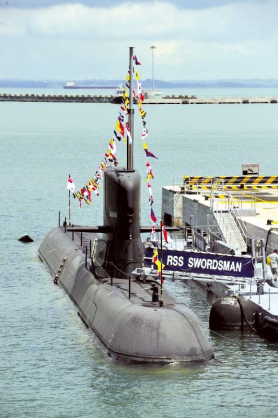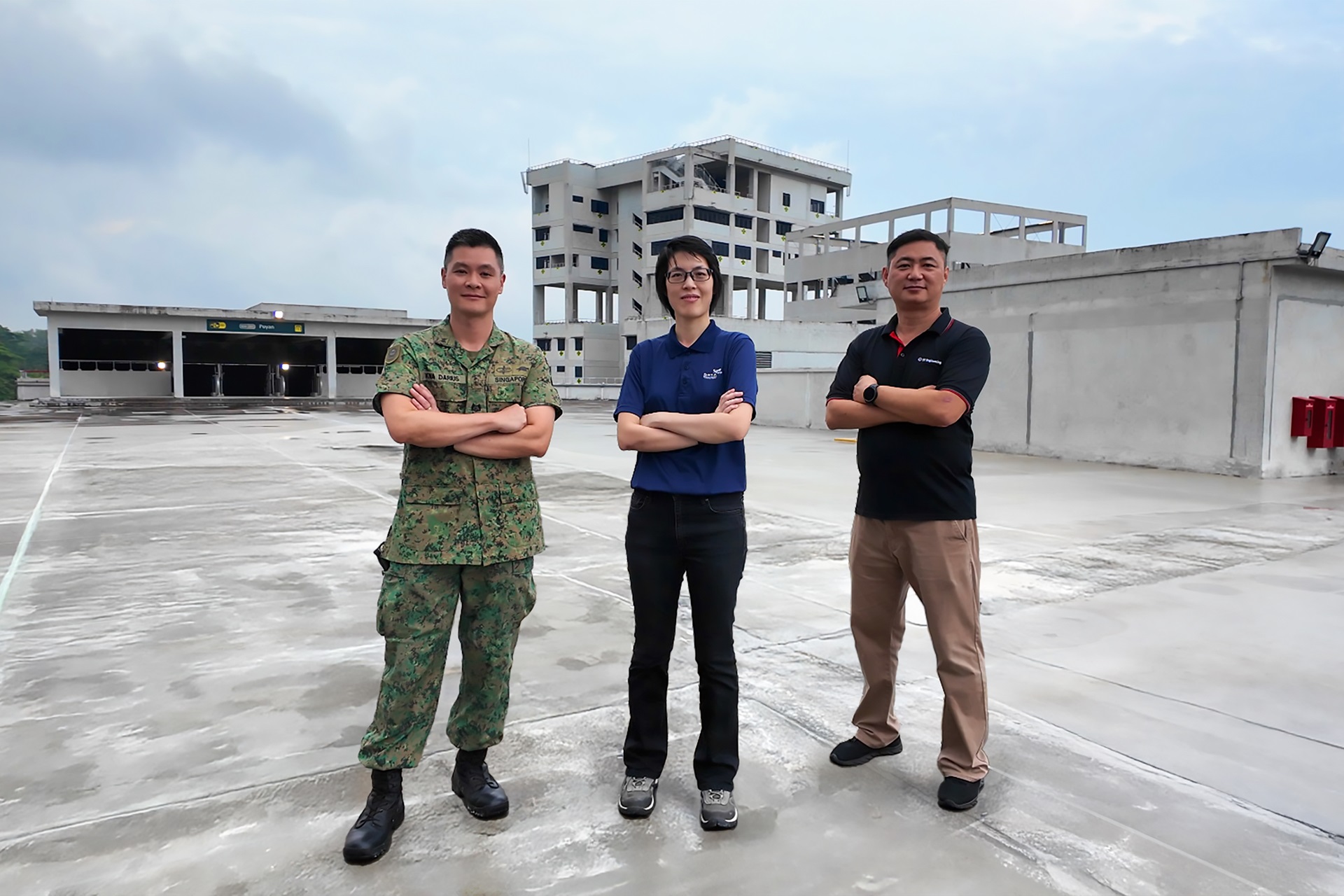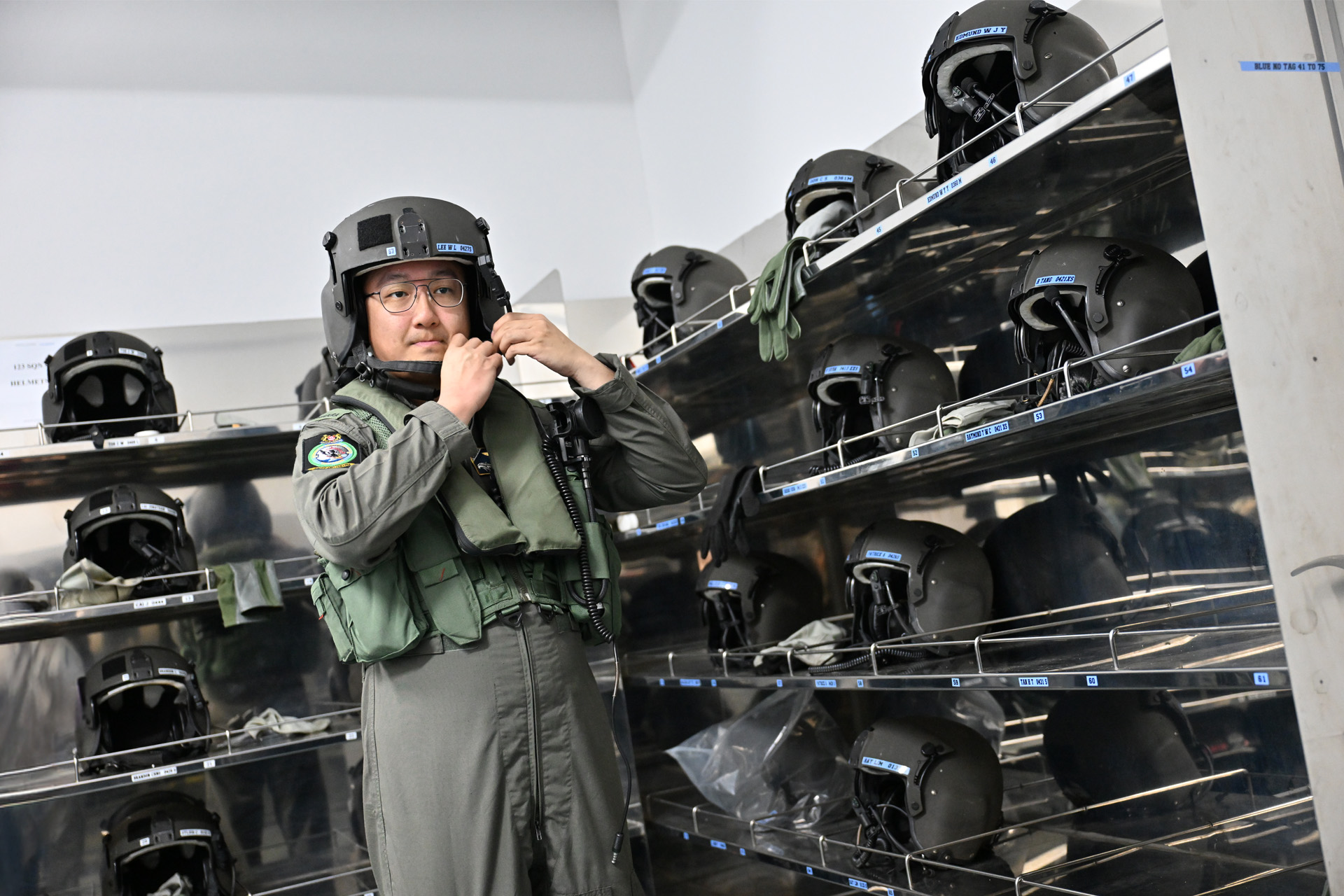TECHNOLOGY
STEALTH MANAGEMENT
18 May 2015

Their crews are some of the most highly trained sailors in the navy. Powerful and stealthy, the submarines of 171 Squadron (SQN) patrol the depths of the ocean and play their role quietly in maintaining the defence of Singapore's waters.
Each weighing over 1,000 tonnes and measuring over 50m in length, the Archer-class submarines of 171 SQN are well-oiled war machines that stand ready to protect Singapore's sea lines of communication.
The Republic of Singapore Navy (RSN), however, did not always have such a capable submarine force. Only in 1995 was it announced that the Navy was to acquire its first submarines from the Royal Swedish Navy (RSwN). A total of four Sjoormen-class submarines - later renamed the Challenger-class - were purchased from the RSwN.
Since then, it has been a continuous process of learning and refinement by the crews to ensure that the RSN's submarines can perform to the highest standards.
Dipping their toes into submarine training
For the first batch of 12 would-be RSN submariners, the cold and windy town of Karlskrona would be their home for the next few years as they arrived in Sweden on 9 Apr 1996 for training by the RSwN.
Colonel (COL) (Ret) Cyril Lee, the very first RSN personnel to be awarded the submariner badge, said: "Initially, it was an almost 50-50 mix of experienced Swedish crew and Singaporean trainees.
"The Swedish side gradually tapered as our individual proficiency increased. In the end, we only had one Swedish Commanding Officer, one Marine Engineering Officer, and one radio operator."
RSS Challenger, the RSN's first submarine, was launched at the Kockums Shipyard in Malmo, Sweden on 26 Sep 1997.
Over the two years of training, the RSN's pioneer submariners achieved a number of milestones - taking RSS Challenger for her first dive while completely manned by Singaporeans; undergoing their first live torpedo firing; and even expanding their families, with 28 children born in Sweden.
On 9 Aug 2000, at Singapore's 35th National Day Parade, a Maritime Review was held off Marina Bay in full view of guests and the public. After the last ship had sailed past, a black hull emerged from the sea.
RSS Conqueror, the first submarine to arrive home in Singapore, surfaced after her "reconnaissance" mission, surprising those present and proving the expertise of the RSN's submariners. At her conning tower were two smartly dressed Naval officers, one saluting and the other waving a Singapore flag.
Sharpening the edge
With the expertise of the pioneer batch of submariners, 171 SQN began its own submarine training programme in 2001.
Lieutenant Colonel (LTC) Charles Teng, the first locally trained submariner, recalled the tough training, noting that it was very different from that for surface ships.
Speed is especially critical in any emergency situation during underwater operations, and the entire crew is cross-trained to take over another colleague's job if needed. "We have to know every system on board... One of our final tests was the Blind Man's Walk, where we were blindfolded and had to walk through the entire submarine, locate important equipment and operate them," said LTC Teng.
Military Expert 2 Gunaselan, the first chef on board a submarine, added that the crew had to be highly versatile and work as a team. He served on board RSS Challenger, and aside from cooking for the crew, he was trained in many other roles. "I'm responsible for certain safety systems such as putting the oxygen systems into operational settings. I also help in operational duties like torpedo loading, and conduct sound and security rounds throughout the boat."
The next wave
In 2005, the RSN signed an agreement with the RSwN to acquire two Vastergotland-class submarines, which were later renamed the Archer-class submarines. The first of its class, RSS Archer was commissioned into the RSN on 2 Dec 2011.
Compared to their predecessors, the Archer-class submarines boast several improvements, such as upgraded combat and sensor suites. Their air independent propulsion system allows them to remain submerged for twice as long for greater endurance and stealth.
In 2013, Singapore signed a contract with ThyssenKrupp Marine Systems to acquire two Type 218SG class submarines to replace the aging Challenger-class boats, which will be progressively retired from service.
Slated to arrive in 2020, these new submarines will push the RSN's submariners to even greater levels of excellence and teamwork. As COL (Ret) Lee said: "In the submarines, there is no 'I'. Even as the Commanding Officer, I had to rely on the team. It is all collaborative. No one is above the team."
RSN submariners undergoing helmsman training in the submarine steering and diving simulator.
Conquering training challenges
On 11 Mar, the RSN launched a new Submarine Training Centre (STC) at Changi Naval Base, marking a major milestone in the history of the RSN's local submarine training.
A one-stop training facility that enhances training realism, effectiveness and efficiency, the centre features simulators where both individual and team training can be conducted in a safe environment incorporating realistic scenarios.
In the submarine steering and diving simulator, for instance, the crew can undergo helmsman training. For added realism, the simulator is mounted on hydraulics to mimic the movement of a real submarine.
In recognition of the RSN's first submarine and training platform, the STC was named RSS Challenger. RSS Challenger, together with RSS Centurion, were retired from service on the same day.
ALSO READ IN TECHNOLOGY

AI joins the fight in national cyber defence exercise
12 Nov 2025
AI and closer collaboration among agencies and industry are taking centre stage in this year’s Critical Infrastructure Defence Exercise (CIDeX).

They built this city
01 Oct 2025
Turning vision to reality: the team behind SAFTI City clinches the Defence Technology Prize 2025 Team (Engineering) Award!

Operating over skies & seas
22 Aug 2025
This gear is designed to help a Sensor Supervisor survive emergencies in the air and at sea.




